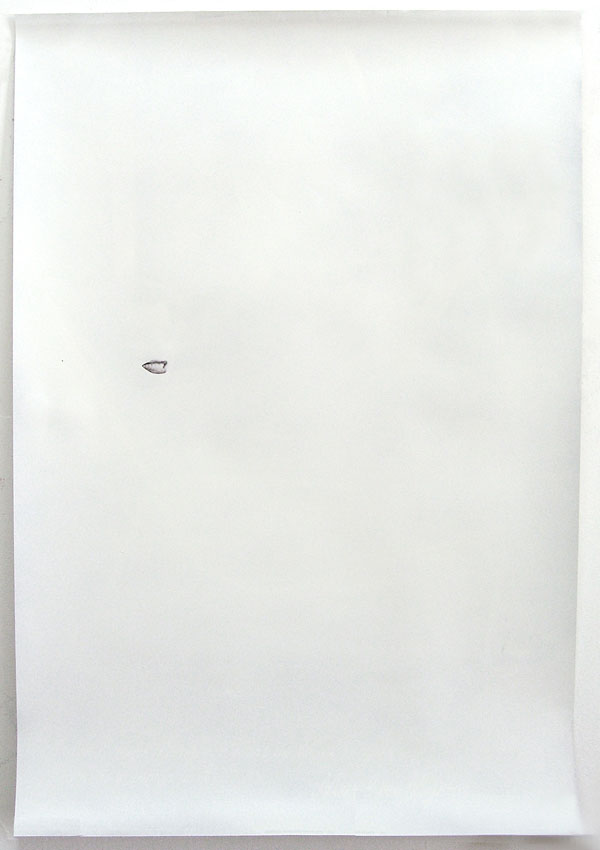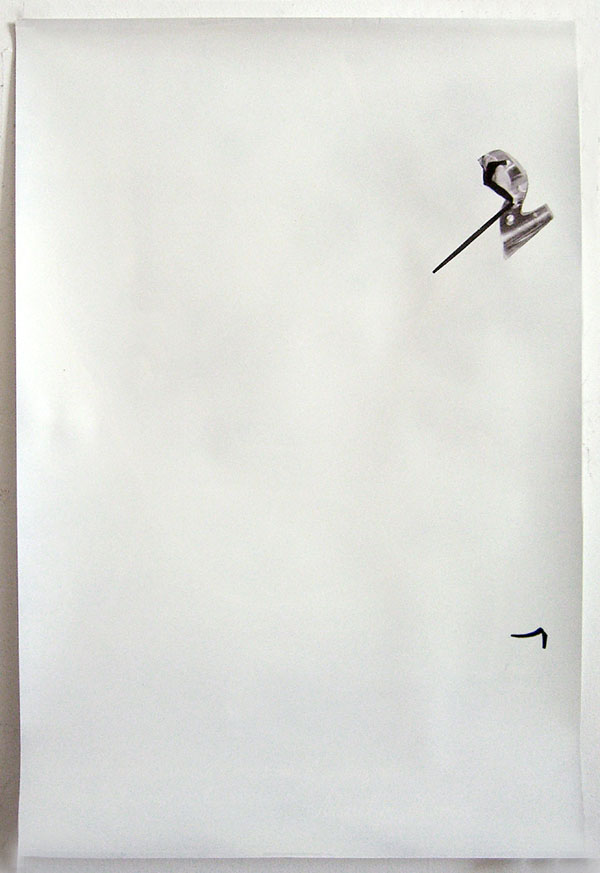














Bobbi Woods
August 28–September 26, 2009
Bobbi Woods culls from the glut of ready-made images crowding our collective consciousness, resulting in 2-D and video works that simultaneously bait and beguile. Woods’ work has been included in exhibitions nationally and internationally, most recently at Asia Song Society; New York, NY, and Mesler&Hug; Los Angeles, CA. Her work was recently included in the inaugural issue of Animal Shelter and will be featured in the forthcoming issue of ANP Quarterly. Woods is a graduate of the Art Center College of Design in Pasadena, California. Woods' exhibition coincides with the commencement of the gallery's year-long collaboration with writer John Motley.
As part of a continued commitment to fostering vital discourse surrounding contemporary art, Fourteen30 Contemporary has commissioned Motley to produce a critical essay for each gallery exhibition through the summer of 2010. Each essay will appear as part of a limited quantity of offset printed posters, available at the gallery or by request. In an excerpt from his essay on Woods, Motley writes:
“Los Angeles-based artist Bobbi Woods' practice is inseparable from the raw materials of pop culture. Using promotional movie and fan posters as her canvases, she manipulates their existing imagery with spray-painted enamel, designed to obscure and slant in the subtlest of ways. Some posters are blanched to near whiteness; others interrupted by imposing black polygons that rend worrying gaps in a viewer’s context. Elsewhere, she uses the stock iconography of pop culture—the Playboy bunny, Marilyn Monroe’s lips—as the foundation of works that, like the posters, isolate or embellish these images to stress their symbolic currency. Stripped of their original contexts or otherwise disfigured, they nonetheless radiate sexuality. They still seduce.
Though Woods’ treatment of her materials almost always involves a strategy of obfuscation, this move operates along the lines of ‘blocking’ in film and theater. Just as the director frames his actors—often through stylized obstructions—Woods runs deceptively facile interference on the posters she manipulates to refocus our attention on the absurd and often disturbing subtexts that lurk there. Put another way, she reveals the artifacts of popular media to be so over-abundant in their visibility that even her defacement of them results in another level of signification. It’s a dazzling inversion of perceived binaries, in which Woods applies opacity and interruption as devices to produce transparency.”
August 28–September 26, 2009
Bobbi Woods culls from the glut of ready-made images crowding our collective consciousness, resulting in 2-D and video works that simultaneously bait and beguile. Woods’ work has been included in exhibitions nationally and internationally, most recently at Asia Song Society; New York, NY, and Mesler&Hug; Los Angeles, CA. Her work was recently included in the inaugural issue of Animal Shelter and will be featured in the forthcoming issue of ANP Quarterly. Woods is a graduate of the Art Center College of Design in Pasadena, California. Woods' exhibition coincides with the commencement of the gallery's year-long collaboration with writer John Motley.
As part of a continued commitment to fostering vital discourse surrounding contemporary art, Fourteen30 Contemporary has commissioned Motley to produce a critical essay for each gallery exhibition through the summer of 2010. Each essay will appear as part of a limited quantity of offset printed posters, available at the gallery or by request. In an excerpt from his essay on Woods, Motley writes:
“Los Angeles-based artist Bobbi Woods' practice is inseparable from the raw materials of pop culture. Using promotional movie and fan posters as her canvases, she manipulates their existing imagery with spray-painted enamel, designed to obscure and slant in the subtlest of ways. Some posters are blanched to near whiteness; others interrupted by imposing black polygons that rend worrying gaps in a viewer’s context. Elsewhere, she uses the stock iconography of pop culture—the Playboy bunny, Marilyn Monroe’s lips—as the foundation of works that, like the posters, isolate or embellish these images to stress their symbolic currency. Stripped of their original contexts or otherwise disfigured, they nonetheless radiate sexuality. They still seduce.
Though Woods’ treatment of her materials almost always involves a strategy of obfuscation, this move operates along the lines of ‘blocking’ in film and theater. Just as the director frames his actors—often through stylized obstructions—Woods runs deceptively facile interference on the posters she manipulates to refocus our attention on the absurd and often disturbing subtexts that lurk there. Put another way, she reveals the artifacts of popular media to be so over-abundant in their visibility that even her defacement of them results in another level of signification. It’s a dazzling inversion of perceived binaries, in which Woods applies opacity and interruption as devices to produce transparency.”